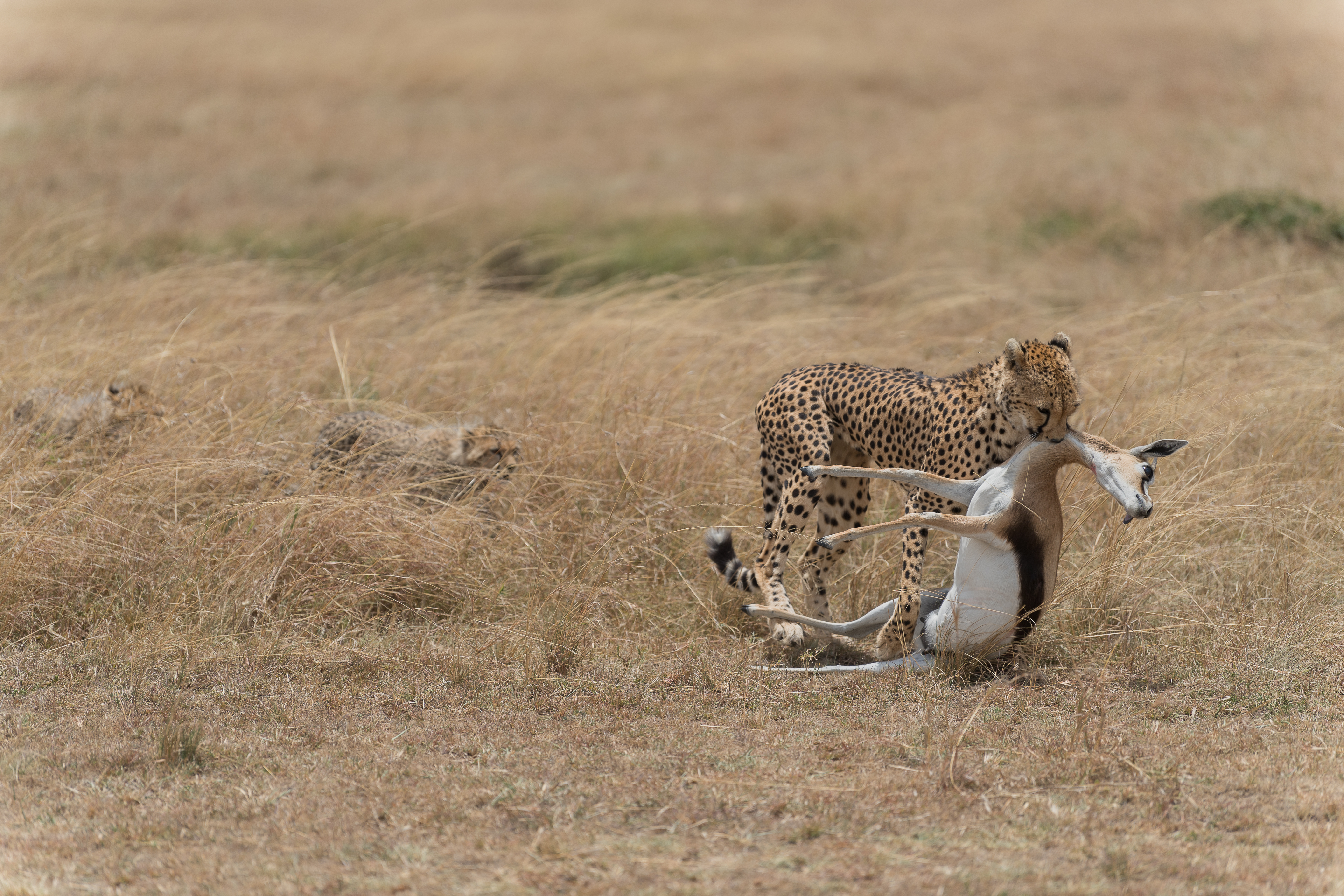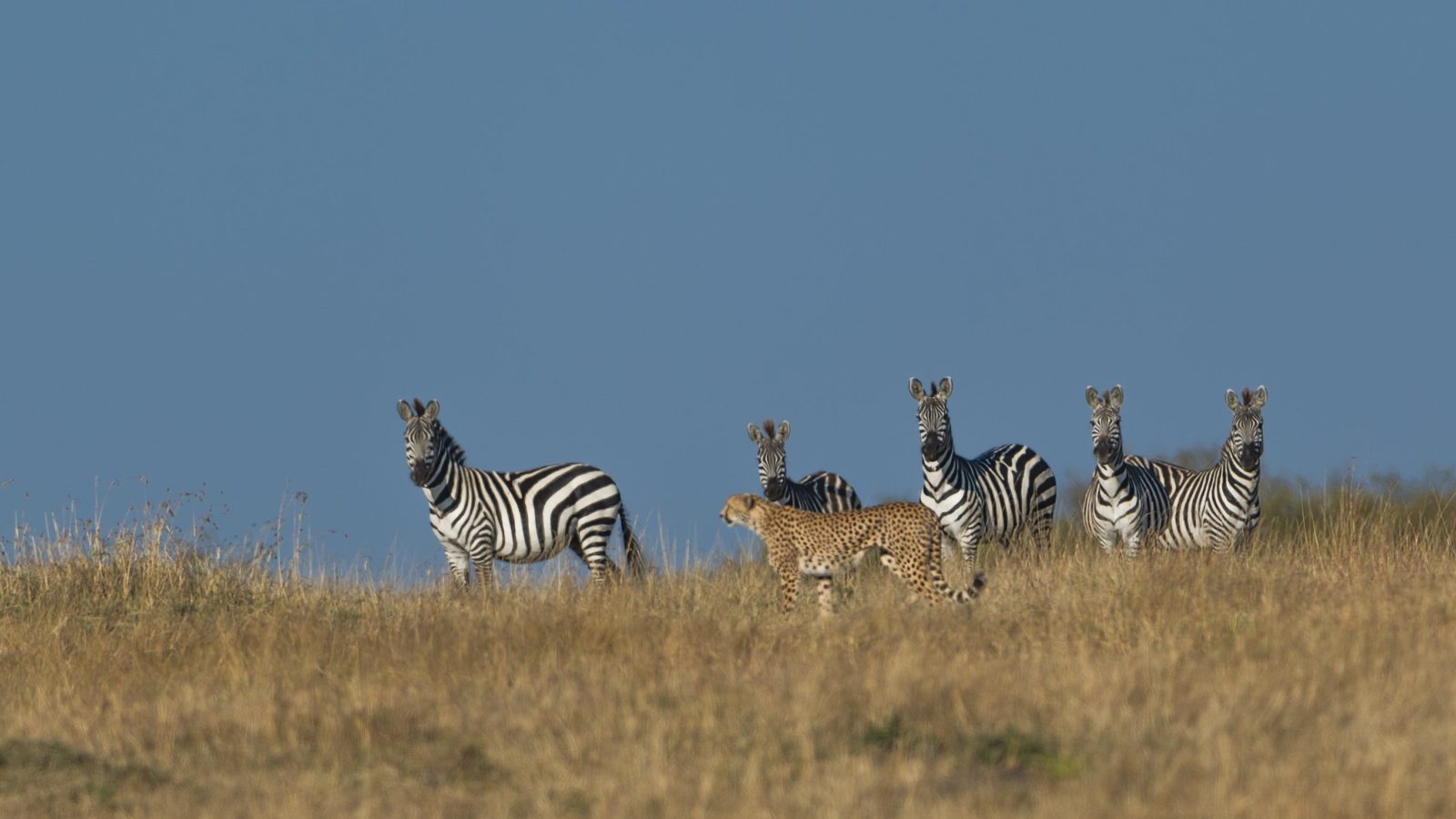In October last year, my husband and I travelled to the mecca of wildlife—the Maasai Mara Reserve. Widely considered to be Africa’s greatest wildlife destination, even before we touched down the Kenyan capital, I knew that something inside me was about to change, forever.
We stayed in Jackleberry camp nestled in the heart of the 200 square miles of open Savanna grasslands. Home to a breathtaking array of predators and prey, the plains are scattered with the African lion, crocodile, the African leopard, cheetah, hyena and jackal. Plentiful prey include herds of zebra, giraffe, gazelle, impala, wildebeest, African elephant, the Cape buffalo, hippos and the Topi deer.
I always believed that even though predators and prey shared the same region, they would have separate marked territories, physically or at least psychologically. However, I was soon to learn otherwise.
During our safaris, from daybreak to sunset led by William Rotiken, our erudite Masaai guide and co-founder Jackleberry Safaris, and Anuj Mukherjee, a keen wildlife photographer and co-founder Wild Voyager, I saw several instances of a phenomenon that completely blew my mind.
One breezy morning, we spotted a pride of three lionesses walking in a line with the classic gait of a queen. The pride was out on a hunt but was looking for an easy kill. I saw a herd of Topis and gazelles watch the pride from a distance. They were alert. Zebras looked on, cautiously monitoring the moves, seeing their tracks. What surprised me was that the herd did not sprint the moment they saw the lionesses. There was no mayhem, no escaping beyond the pride’s vision. They wouldn’t run until a hunt began.
After a tense period of close to 20 minutes, the lionesses changed their path. As it was clear there wasn’t any possibility of a hunt, the herds lowered their necks and began grazing, almost instantly, carrying on with life as usual.
It was a beautiful experience to see this amalgamation of predator and prey in one frame. I always believed that lions and lionesses, the powerful predators, ‘dominate’ Mara. Yes, they do dominate. But not quite like how we perceive domination in the human world, which is to the exclusion and powerlessness of everyone else.
On another afternoon, a queer sight caught our attention. There was a massive herd of prey looking in one direction. Zebras, antelopes, gazelles, impalas, Topis et al, intensely staring at something. Transfixed. There was tension in the air. As we drove further, the mystery unfolded. There was a cheetah marching on, with three young cubs behind her. She appeared resolute, like a mother on a mission.
She scanned the horizon, walked a few steps and stopped. Her gaze was steady. She was looking for the right kill.
We parked our jeep on an elevated portion of the plains, and were set for game viewing. On the one hand was the cheetah and her cubs streaming the area, learning how to hunt from their mother on ground, shifting locations off and on, sometimes camouflaging behind foliage, sometimes in the open; and on the other hand, the gazelles, impalas, Topis, all standing at different locations, studying the predators’ positions intently.
We watched her explore and strategise for the next four hours.
It was captivating to see that not just for say 30 minutes but for hours together, the prey did not leave the scene of action. I saw strength and gumption in these animals. They claimed the grasslands as their own, as much as the cheetah did. The fact that predator and prey can live in the same environment, even though both know that one will soon become the other’s meal, is simply awe-inspiring.
Suddenly we heard gazelles bleating, running helter-skelter. The hunt was on! It happened in a matter of split seconds. From a distance, we saw the cheetah with a gazelle’s half slunk body in its jaws, clutching it by its neck. She looked exhausted. Breathing heavily, dropping the gazelle on the ground, taking a breather, and again lifting it in its jaws, trudging ahead, until she found a shaded spot to settle down. The cubs walked playfully ahead of her. They appeared happy that mommy’s got food. We felt relieved that she had succeeded after half a day’s hard work under the sharp sun.

I looked around me to see if anything had changed. Of course not. What did I expect? Life went on. Gazelles, Topis, zebras got on with their activities. It was a stunning demonstration of nature’s balance. How living beings, so different from each other, can mutually coexist, supporting each other’s survival.
It’s a common belief that predator and prey lie at opposite extremes. And yet, what I saw in Mara was an intersection of the two.
On another day, pre-dawn, we saw a new life step into the Mara. A Topi deer had just given birth. She was licking the fragile newborn and nudging it to get its balance right. It got up, fell down, stumbling off and on. Soon she started walking away. My heart was racing! Within minutes of its birth, the calf had to learn to walk on its own while attempting to follow her. That’s how quick one has to ‘get on your feet’ in the wild. It was already receiving its first survival lesson. It fell down again, and got up, this time more confident. Few moments later, both were walking into the horizon towards the red rising sun.
It was a very heart-warming moment. The mother knew that danger lurks. A lioness or hyena could be anywhere close by. Her calf was the most vulnerable prey on that Mara morning. But that was immaterial. The mother must teach her offspring to live, fearlessly. The calf must learn to make its way.
On our last night at Mara, I looked up at the mesmerising star-studded African skies and saw the Milky Way. I couldn’t help but wonder that all animals of the Mara, predator and prey, sleep under the same glittering carpet of stars. All enjoy the same unadulterated brilliance of the Mara sunrise and sunsets. And all drink from the same rivers.
Nature is such an equaliser.
Thank you Mara for demonstrating what ‘live and let live’ truly means. You hold significant lessons for the human race. Technically speaking, we humans are not even predator and prey of each other. We are all of the same kind. But are we? We belong to the same family. But do we?
Want to share how you thrive? Write to us at [email protected]


